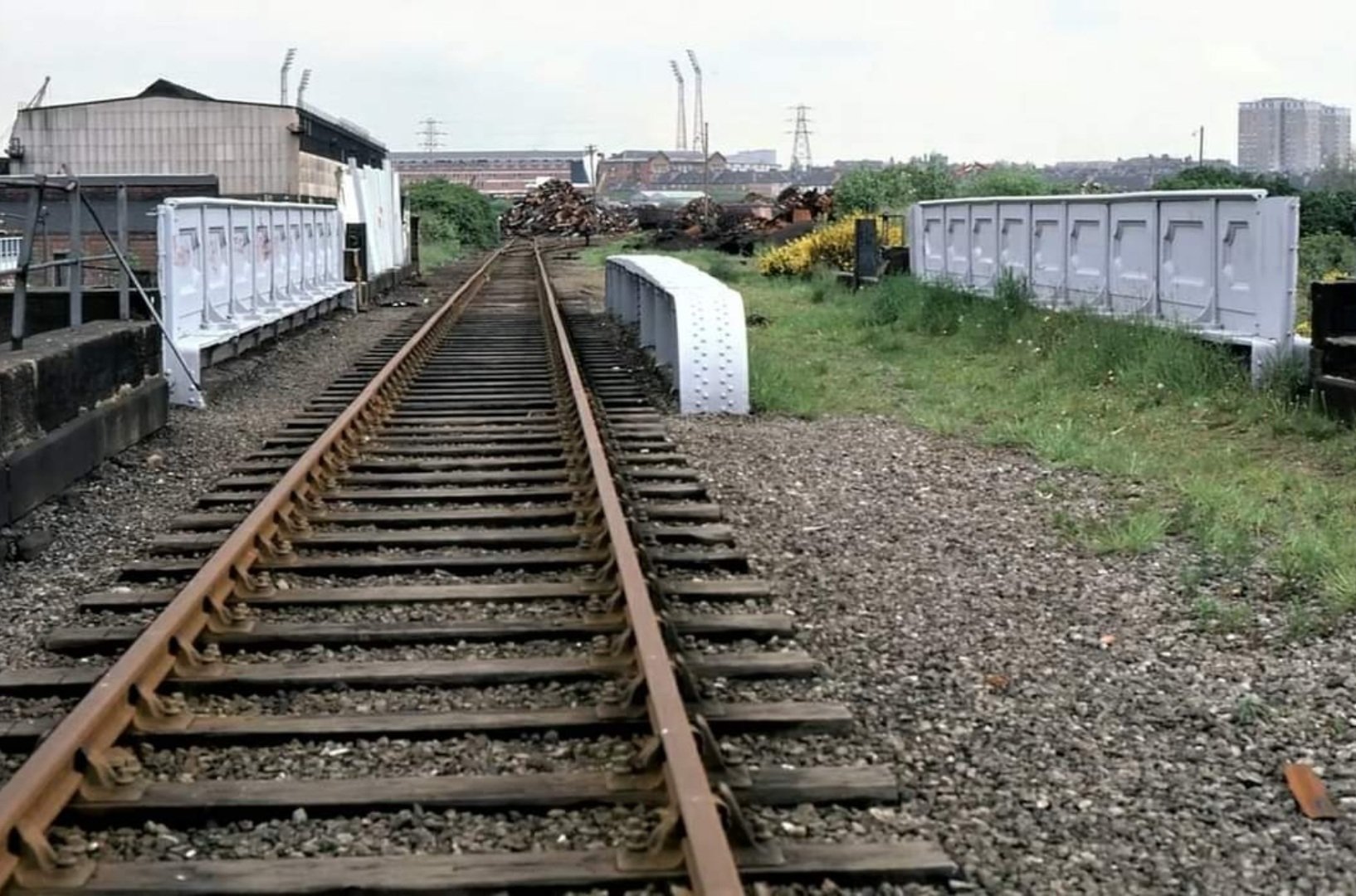Details
First Match: 12 Oct 1959
Switched off/Stadium Demolition: 1994
Lighting up Celtic Park
They may be long gone but in their own way, the Floodlights have etched themselves into a part of the minds of the older supporters.
For those who were supporters and travellers to Celtic Park prior to the restructuring in the mid-nineties, the Celtic floodlights held quite a sight. As you approached the ground from afar, the first glimpse you would get to signal you were getting closer were those towering floodlights. They stood out so well, and in their own way became a marker or icon for football stadia everywhere.
The floodlights are a big part of the memories of going to big night games. For example, for those heading in from Lanarkshire, when they hit London Road and the bend at the cemetery, there they were… glorious… they always looked like shining through the fog. Magical.
If you ever look back on some old match day photos, you’ll even sometimes see ‘fearless’ fans climbing the floodlights and perching themselves on the rails to watch the games from high up. You will also get some with crazy nostalgic tales of fans climbing the floodlights to hang scarves on as high a spot as they could get to. Dangerous days.
First Attempt
In the early days, experiments had taken place in England as early as 1888, and Celtic’s first attempt to host an illuminated match, during a friendly against Clyde on Christmas day, 1893. The Christmas clash drew a crowd of 5,000 spectators due to the novelty of a football match taking place under the aid of electric light. Football had been played under artificial lights in Scotland before, particularly at the Edinburgh Exhibitions, but this was the first match of the kind in a club owned stadium such as Celtic Park. Some 16 arch lights were suspended above the pitch on wires, which were fixed to a dozen, 50 feet high, wooden posts. Meanwhile, almost 100 gas-jets provided additional illumination along the covered enclosure. Apart from the obvious eyesore of multiple wires hanging across the pitch, the cables also tended to sag too low and interfere with lofted passes.
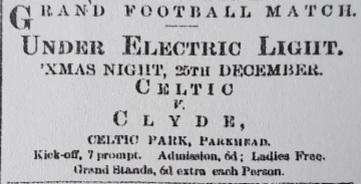
Eventually, in January 1894, the issue came to a head when St Bernard’s FC were beaten 8-1 by Celtic in the Quarter-Finals of the Scottish Cup. After the match, St Bernard’s lodged a protest with the SFA, regarding the ball striking the electric lighting wires. By virtue of the fact that the ball had only struck the wires twice during the game, St Bernard’s withdrew their protest, but maintained that their initial objection had been based on principle. Taking note of the clear failure of night time football at Celtic Park, the club swiftly abandoned the notion.
Incredibly, the next time that the Bhoys were to play a match under floodlit conditions was not to be until 25 June 1931 against Michigan All Stars, during a tour of the USA.
Second Attempt
Despite the failed pioneering attempts from the early days, Celtic were to be slow to the take-up in later years, and were actually relatively late to have floodlights fully installed at Celtic Park. As ex-Celtic player Peter Goldie remarked in a retrospective interview:
“The ground was completely different from what it is today. There were no coverings on the terraces – no floodlights, only a 60 watt bulb at either end of the main stand, so when you went out to train at night it was pretty dark”.
While most other senior clubs in Scotland and England were already capable of playing under lights it was not until October 1959 that the Bhoys switched on their floodlight system. Another reflection of the contrasting board management of the pioneering founders compared to the poor management by the boards the post-war era.
Regardless, the Celtic board boasted that the Parkhead lights were the best in football and that the four pylons – at 208 feet high – were the tallest such structures in the world. By the end of August 1959 the pylons and lights were all up and the work started on cabling and connection.
The floodlight system was installed at a cost of £40,000 by Edinburgh firm Miller and Stables Ltd, or “drenchliting” as they called it.
One of the most disappointing points about their construction was how the board funded the purchase of the floodlights. First team favourites like Bobby Collins were sold on (against the wishes of Bobby Collins himself) to help raise the funds for the erecting of the floodlights. Taking in the success of Bobby Collins down south over the following decade in contrast to the general shambles at Celtic Park, then truly the Celtic support were sold short by the board.
The first match in which the floodlights were used was in a friendly v Wolves on 12th October 1959. To mark the occasion the Hoops had actually hoped to organise a glamour friendly with bigger fish. They had first tried to bring Real Madrid to Celtic Park for the game and though they offered the Spaniards a £5000 guarantee, Real Madrid required double this figure. The second choice was the French side and European Cup runners up Stade de Rheims, who also were unavailable. Wolverhampton Wanderers as English Champions were the third choice.
If there was one big headache of the floodlights for many supporters, then it was as the floodlights were buried and built into the ground’s ends, so if during a full ground you ended up in a place standing behind one of the floodlight stanchions without the ability to move then you’d miss a lot of the game. For those at packed out games this was a nightmare. It’s definitely one of the good progressions of the modern game that the stanchions are mostly gone so fans don’t have to worry about this problem anymore.
As stadium design evolved then sadly it meant that floodlights were heading for the scrapheap. The Taylor Report of the 1990s meant that Celtic Park had to be rebuilt, and it was to be the death knell for the floodlights.
The floodlights were demolished along with much of the rest of the stadium in 1994 following the stadium rebuild, and that was that. Possibly one of the few aspects of the derelict old faithful stadium many wish could have been kept and/or incorporated into the new design (in some way).
Long gone but not forgotten.
Match
- Inaugural switch on of the floodlights: 12 Oct 1959: Celtic 0-3 Wolves: Report

Photograph taken in St Mark St from the School which was facing the back end of Prices bread factory


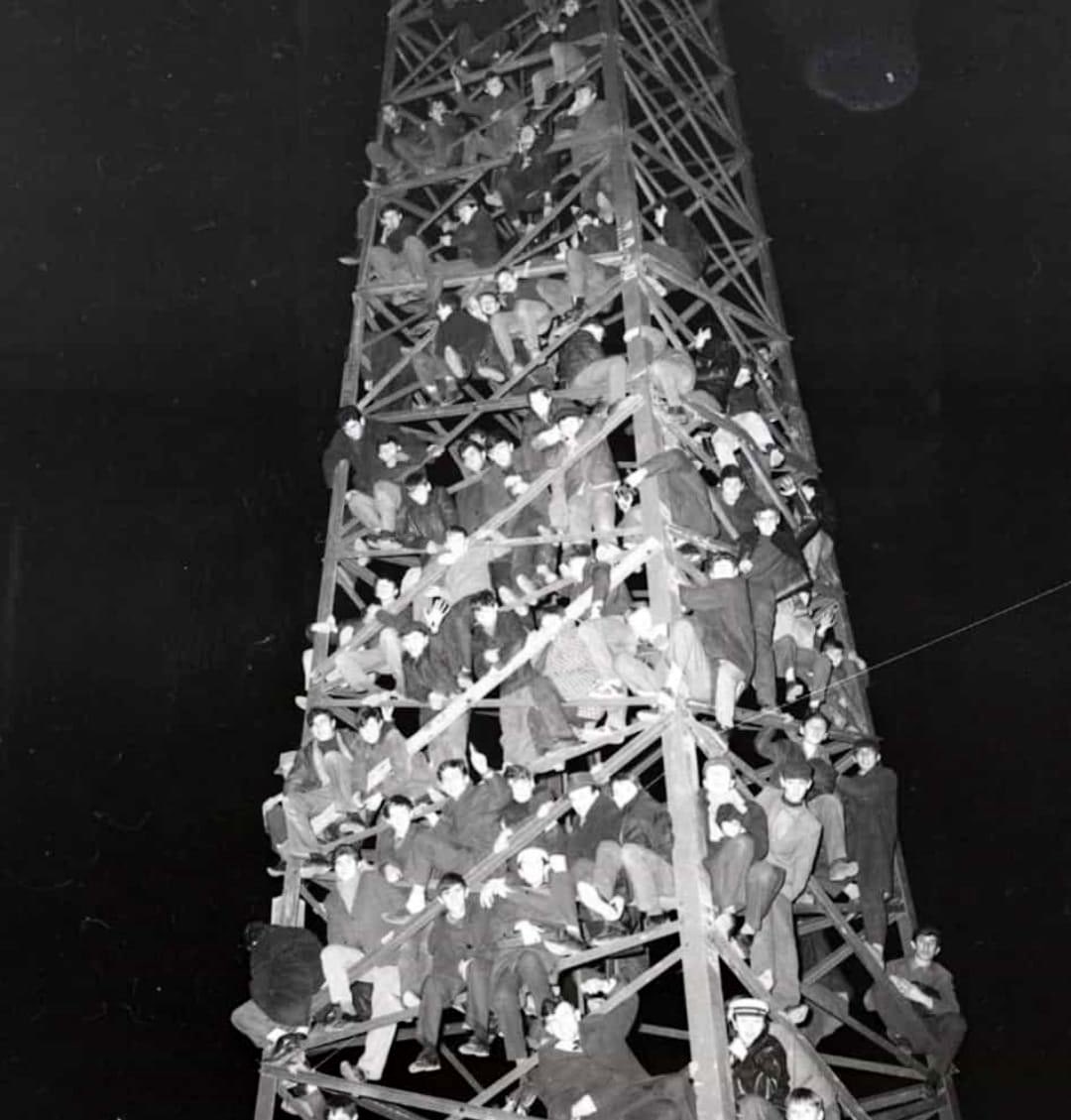
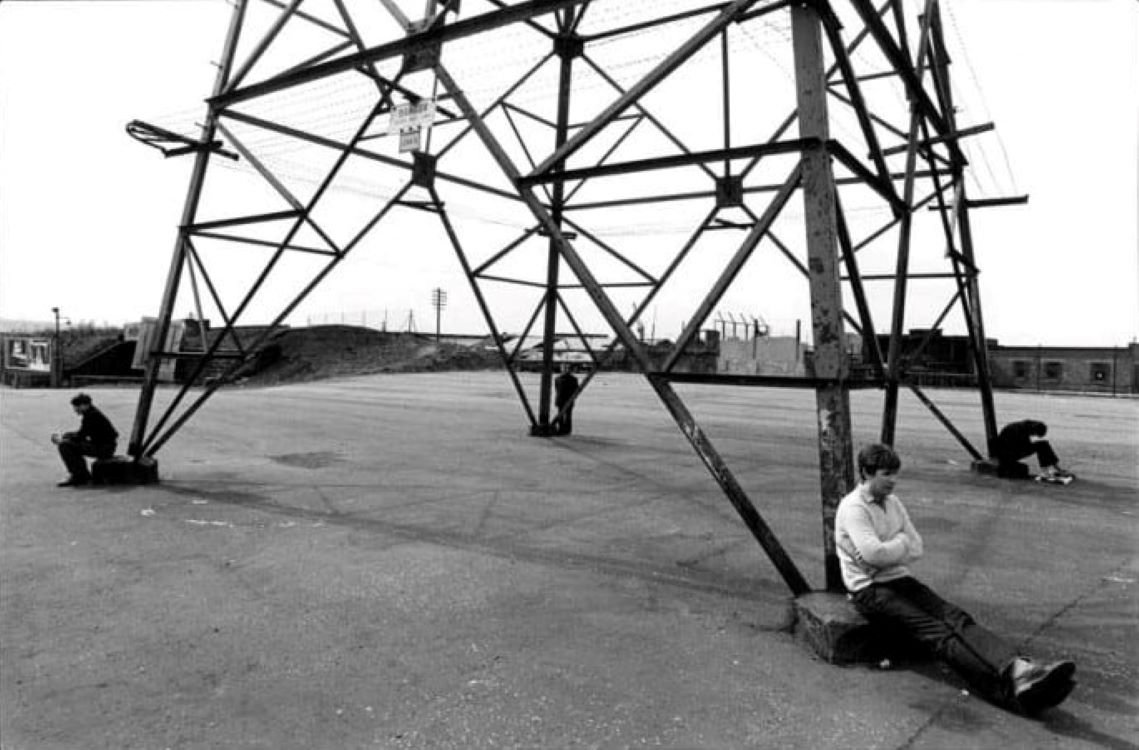
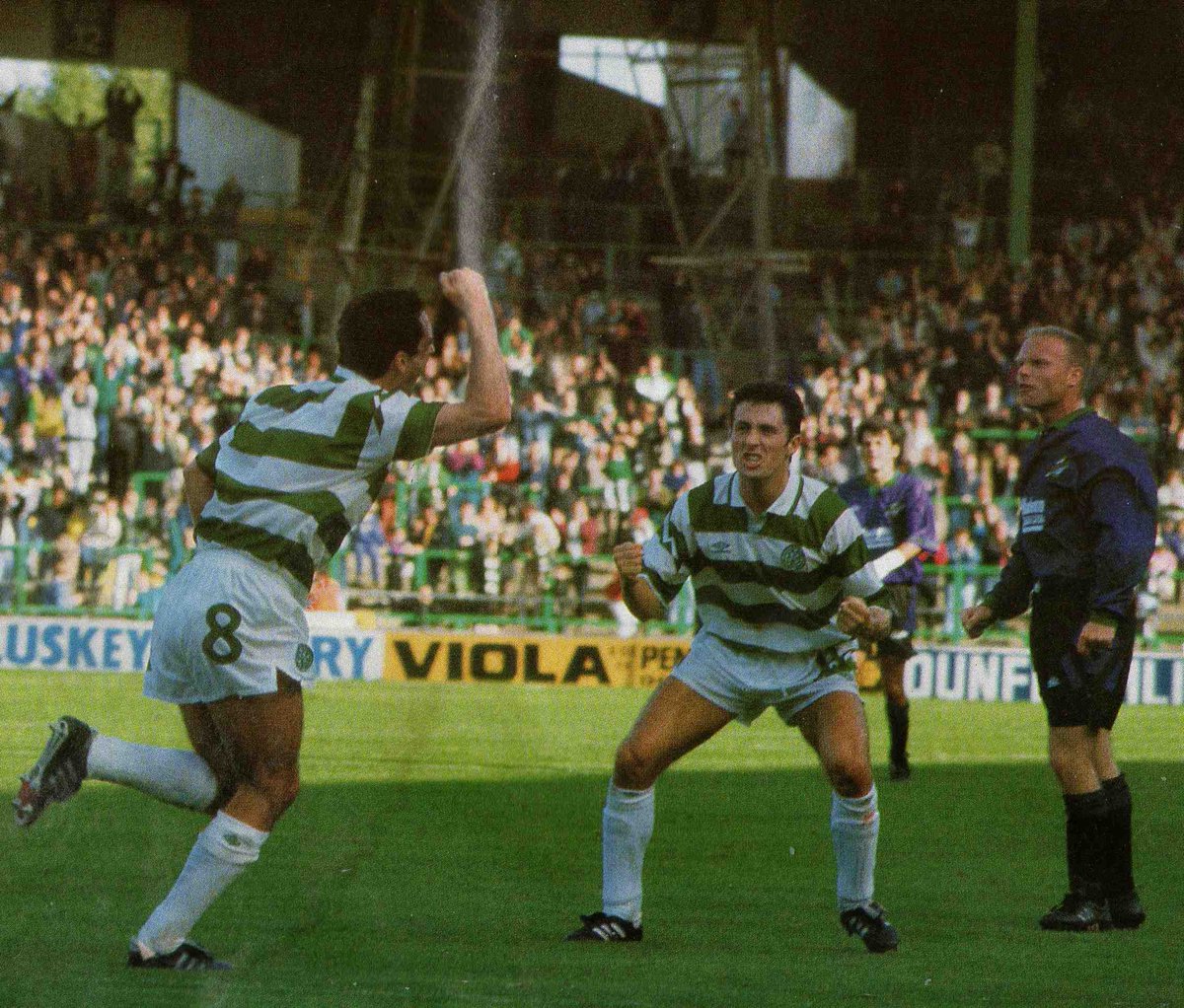


Below is U2 Gig in 1993




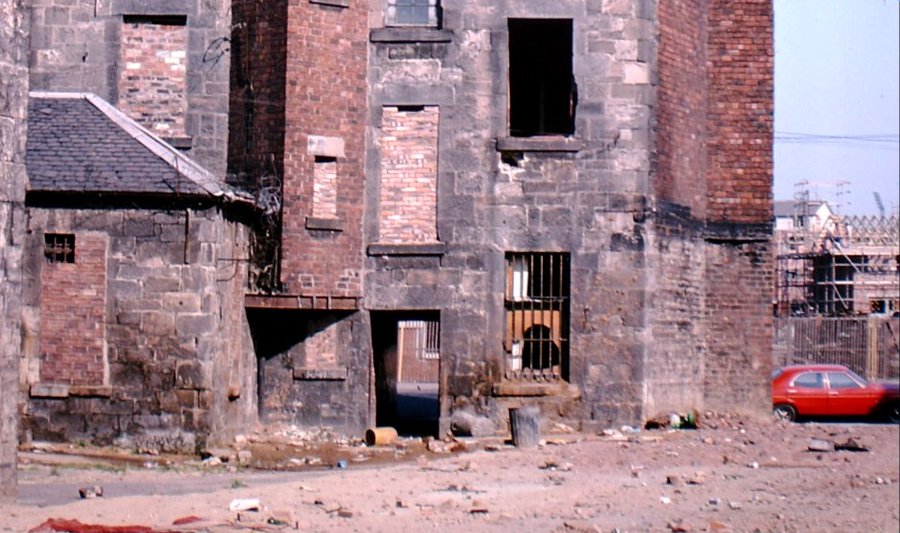
Celtic Attempt Floodlighting For The First Time: Christmas Day 1893
By Liam Kelly 25 December, 2020 No Comments
https://thecelticstar.com/celtic-attempt-floodlighting-for-the-first-time-christmas-day-1893/a
A myth has circulated the Celtic support recently regarding the club being British football’s pioneers of floodlighting. In actual fact, Celtic were relatively late to have floodlights installed at Parkhead and experiments with the system had taken place in England as early as 1888. The myth likely grew from the story of Celtic’s first attempt to host an illuminated match, during a friendly against Clyde on Christmas day, 1893.
The Christmas clash drew a crowd of 5,000 spectators due to the novelty of a football match taking place under the aid of electric light. Football had been played under artificial lights in Scotland before, particularly at the Edinburgh Exhibitions, but this was the first match of the kind in a club owned stadium such as Celtic Park. Some 16 arch lights were suspended above the pitch on wires, which were fixed to a dozen, 50 feet high, wooden posts. Meanwhile, almost 100 gas-jets provided additional illumination along the covered enclosure.
An article in the Evening Times on Christmas Day 1965, which details the Clyde friendly in 1893
Apart from the obvious eyesore of multiple wires hanging across the pitch, the cables also tended to sag too low and interfere with lofted passes. Eventually, in January 1894, the issue came to a head when St Bernard’s FC were beaten 8-1 by Celtic in the Quarter-Finals of the Scottish Cup. After the match, St Bernard’s lodged a protest with the SFA, regarding the ball striking the electric lighting wires. By virtue of the fact that the ball had only struck the wires twice during the game, St Bernard’s withdrew their protest, but maintained that their initial objection had been based on principle. Taking note of the clear failure of night time football at Celtic Park, the club swiftly abandoned the notion.
The next time that the Bhoys played a match under floodlit conditions was against Michigan All Stars, during a tour of the USA, on 25 June 1931. However, Celtic would have to wait until October 1959 to switch on their own floodlighting system again. The system was installed at a cost of £40,000 by Edinburgh firm Miller and Stables Ltd. Despite many UK grounds already having floodlighting in place, the Celtic board boasted that the Parkhead lights were the best in football and that the four pylons, towering at 208 feet high, were the tallest such structures in the world.
To mark the timely upgrade, the Hoops organised a glamour friendly with Wolverhampton Wanderers on 12 October, 1959. The club had preferred to bring Real Madrid to Celtic Park for the game, but the Spaniards wanted double the £5000 guarantee, which Celtic had offered them. Wolverhampton Wanderers were a welcome replacement, considering that the black country outfit were champions of England. 45,000 Celtic fans braved the rain to enjoy the new facilities, but witnessed their team receive a footballing lesson. The Englishmen triumphed 2-0, which subdued the Celtic support, who were already feeling frustrated by the rumour that Bobby Collins and Willie Fernie were only sold to Everton and Middlesbrough in order to pay for the new lights, during the previous season.
Let there be light as Paradise emerges from the dark ages
By Joe Sullivan
https://www.celticfc.com/news/2021/october/12/let-there-be-light-as-paradise-emerges-from-the-dark-ages/
It was on this day (or night to be precise), 62 years ago on October 12, 1959 that modern-day floodlights were used at Celtic Park for the first occasion just in time to hansel the club’s continental age of enlightenment the following decade.
It’s amazing now to think that such an iconic part of Celtic’s history and an endearing embodiment of classic European nights were actually only around for about 35 years before the old stadium was brought crashing to ground.
The old Celtic Park made way for the magnificent current edifice that rose like Fergus McCann’s phoenix from the ashes of the old board, and the current floodlight positions as part of the roofing structure have now been around for over a quarter-of-a-century and are fast catching up on their historic predecessors that lit the way for so many memorable European nights.
Prior to that, the old floodlight pylons stood seemingly hanging from the sky like four giant translucent beacons seen from miles around on dark Glasgow nights.
Even during daylight they were a landmark and in the early 1970s when Bobby Charlton was due at Hampden for TV work on a Scotland v England match, on nearing the city he made a beeline for the only floodlights he could see and ended up at Celtic Park instead.
European nights at Celtic Park have always been special occasions. The roar of the devoted and fervent crowd, the appearance of glamorous or unknown opponents ready to take on the green and white hoops. The floodlights shining down on the hallowed turf.
And it was the prospect of European nights that established the need for floodlights at Celtic Park in the first place as, previously, midweek games, mainly postponed league matches or cup replays, would be played in the afternoon with many supporters unable to take time off work – and a proviso of the recently introduced European Cup was that all entrants had to have floodlights for the midweek matches.
Those supporters of a certain age will be able to recall those nights when they made their way to Celtic Park, the sight of the pylons towering over the ground, shining down on the pitch, a sign that their destination was near at hand. Excitement would increase, as would nerves.
Since the redevelopment of the stadium, the lights which illuminate proceedings beam down from the structure itself, but with the same result – indeed the recent addition of the ‘Disco Lights’ have greatly added to the midweek experience for supporters.
20242020.jpg
Night-time games are now something that fans take for granted, and only those of senior citizen vintage may recall the pre-1959 days before floodlights were first installed at Celtic Park.
The four pylons which were constructed at the ground, in each of the four corners, cost the club around £40,000 and were reputed to be among the highest such pylons in the world.
A friendly match against English champions for the second successive season, Wolverhampton Wanderers, was arranged to ‘celebrate’ the new lighting, and on Monday, October 12, 1959, a crowd of 45,000 came along to Celtic Park.
Celtic were captained by Bertie Peacock and included John Fallon in goal and a couple of youngsters named Stevie Chalmers and Bertie Auld.
As each bank of floodlights was switched on a tremendous roar went up from the crowd, each level of brilliance being matched by increasing volume. This was a new experience for Celtic fans and they had waited a long time for the club to finally install the lights. Unfortunately the lights were to be the only thing that could be called brilliant as far as Celtic were concerned because they were no match for Wolves.
The English champions dominated the match and Celtic were somewhat flattered by the score. It was noted that on numerous occasions Celtic were caught offside by a very efficient Wolves trap. During one attack at least four Celtic players were caught offside.
While the new floodlights may have impressed the supporters, the performance on the pitch almost certainly didn’t as an inexperienced Celtic side went down 2-0 to Wolves.
The English side, despite fielding five reserves, won through goals from Broadbent and Murray.
A report the following day did complement Celtic on their new floodlights, commenting that “…such was the power of the lamps that there isn’t one inch of shadow on the park. About the only thing the spectators can’t see under the Celtic Park lights is the colour of the players’ eyes.”
While the installation of the permanent pylons only came about in 1959, Celtic first experimented with artificial lighting as far back as 1893.
A friendly game against Clyde was organised for Christmas Day of that year, and a crowd of nearly 5,000 turned up that night for the game, which was played under lighting supplied by sixteen arc-lights suspended from a wire stretched across the field.
Inevitably, there were some stoppages in play due to the ball hitting the wires.
Celtic played under the lights against in January 1894, in a Scottish Cup tie against St Bernard’s. The Celts won 8-1 and a subsequent protest by St Bernard’s regarding the result because the ball had struck the lights a few times was thrown out by the SFA.
This early experiment in artificial lighting was abandoned until 1959.
CELTIC 0
WOLVES 2
(Broadbent, Murray)
Att: 45,000
Celtic: Fallon, MacKay, Mochan, Smith, Evans, Peacock, Chalmers, McVittie, Lochhead, Divers, Auld.
Wolves: Findlayson, Kelly, Harris, Clamp, Stuart, Kirkham, Mason, Durant, Murray, Broadbent, Horne.
Ref: T Wharton





